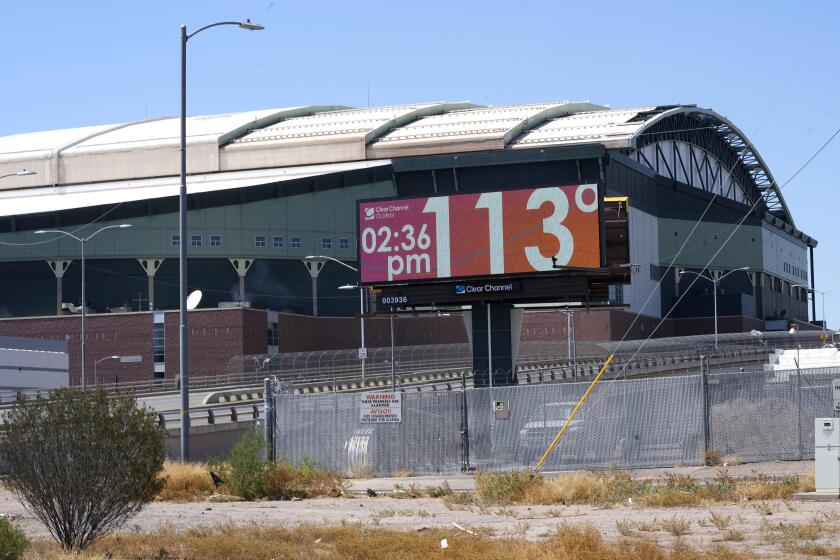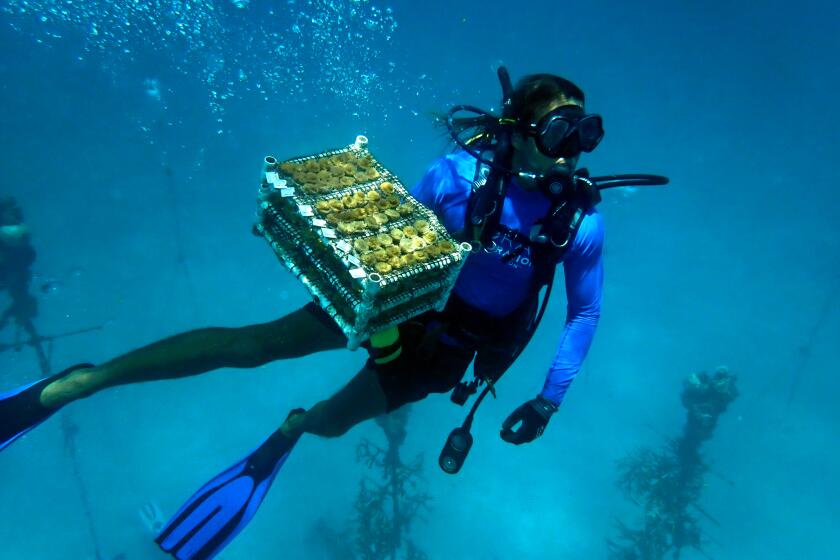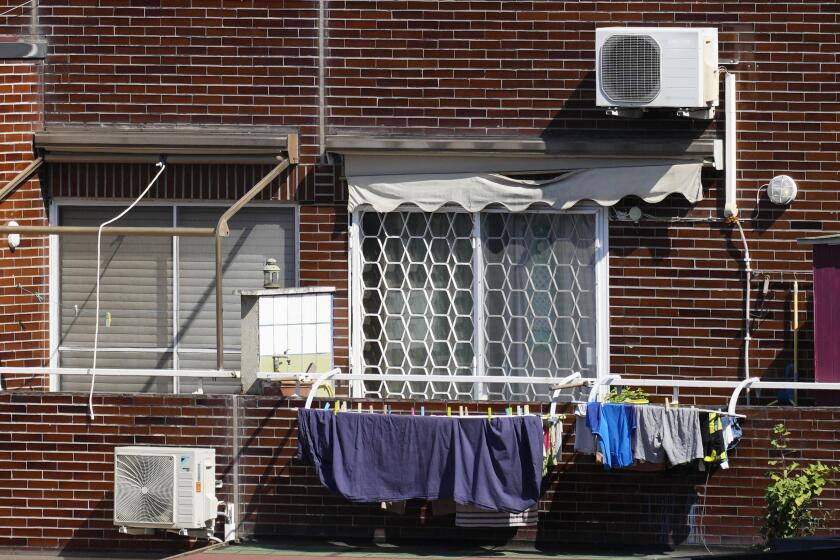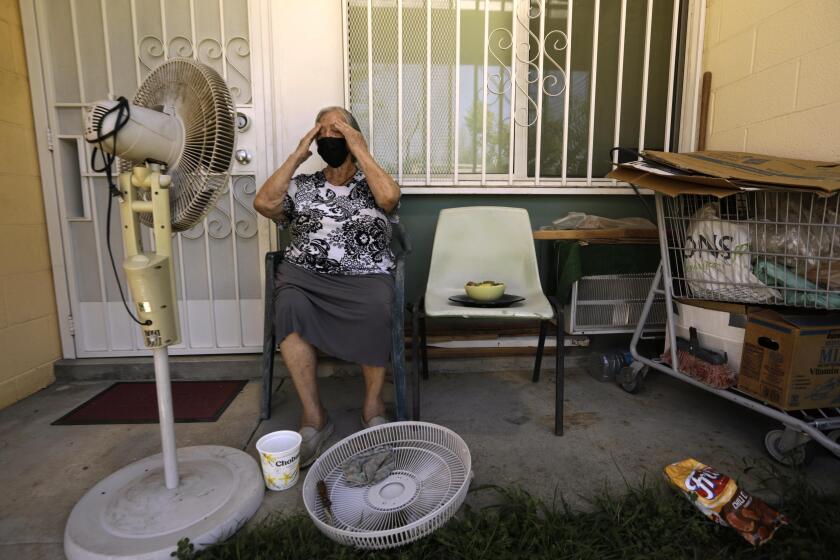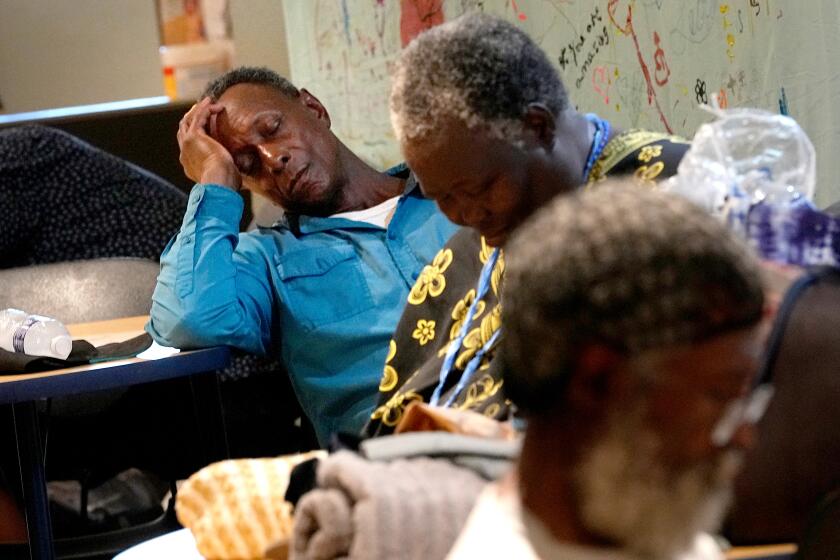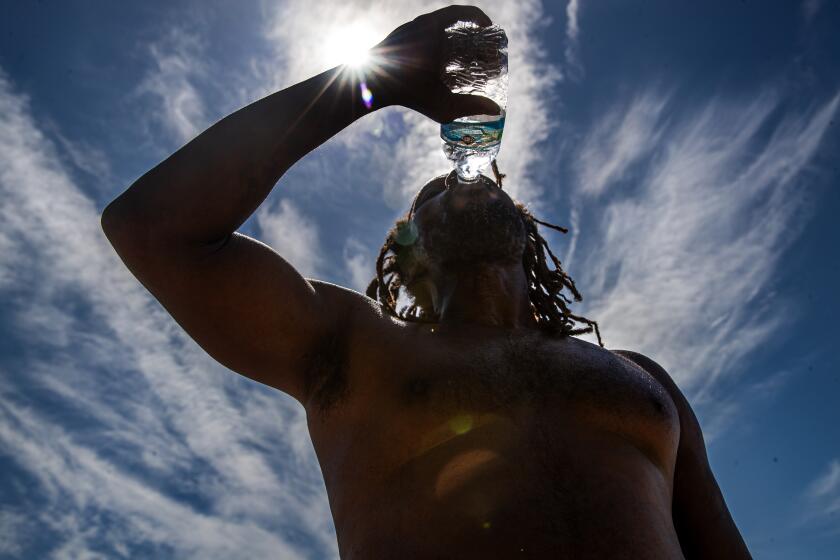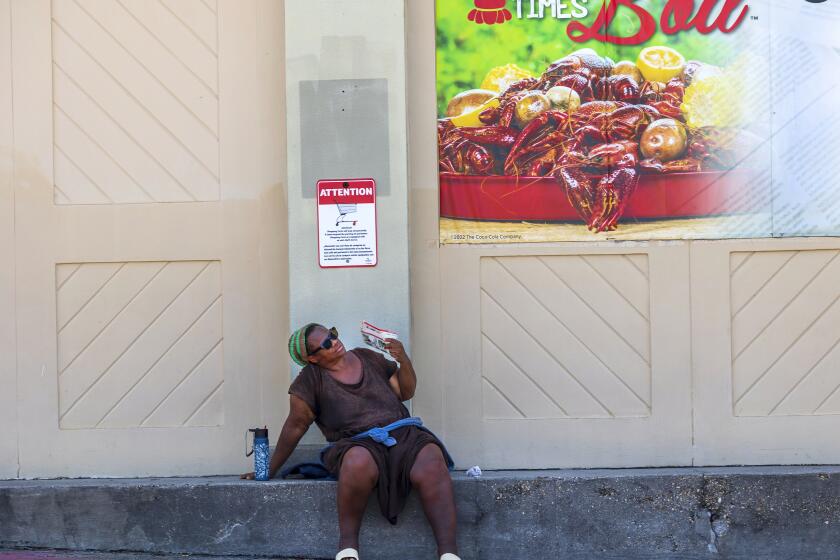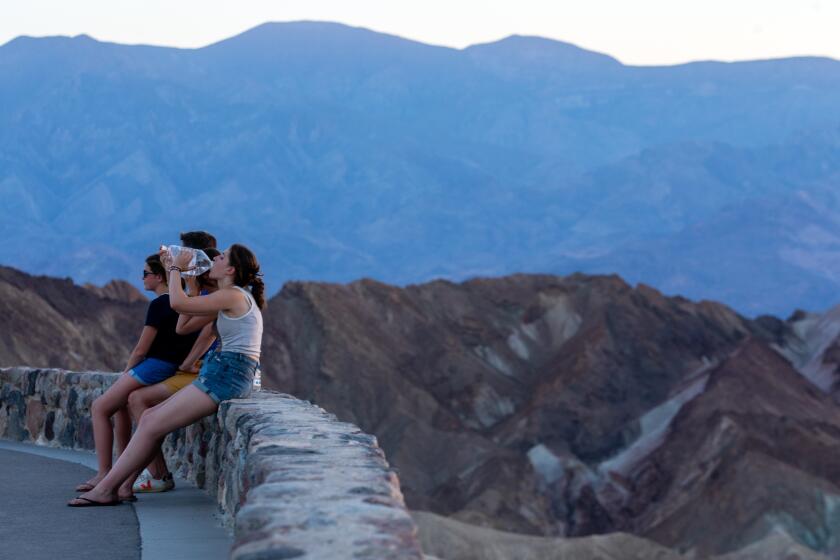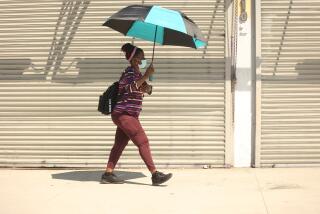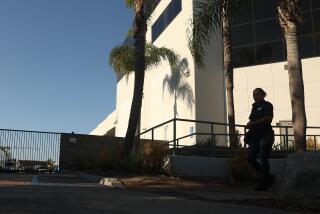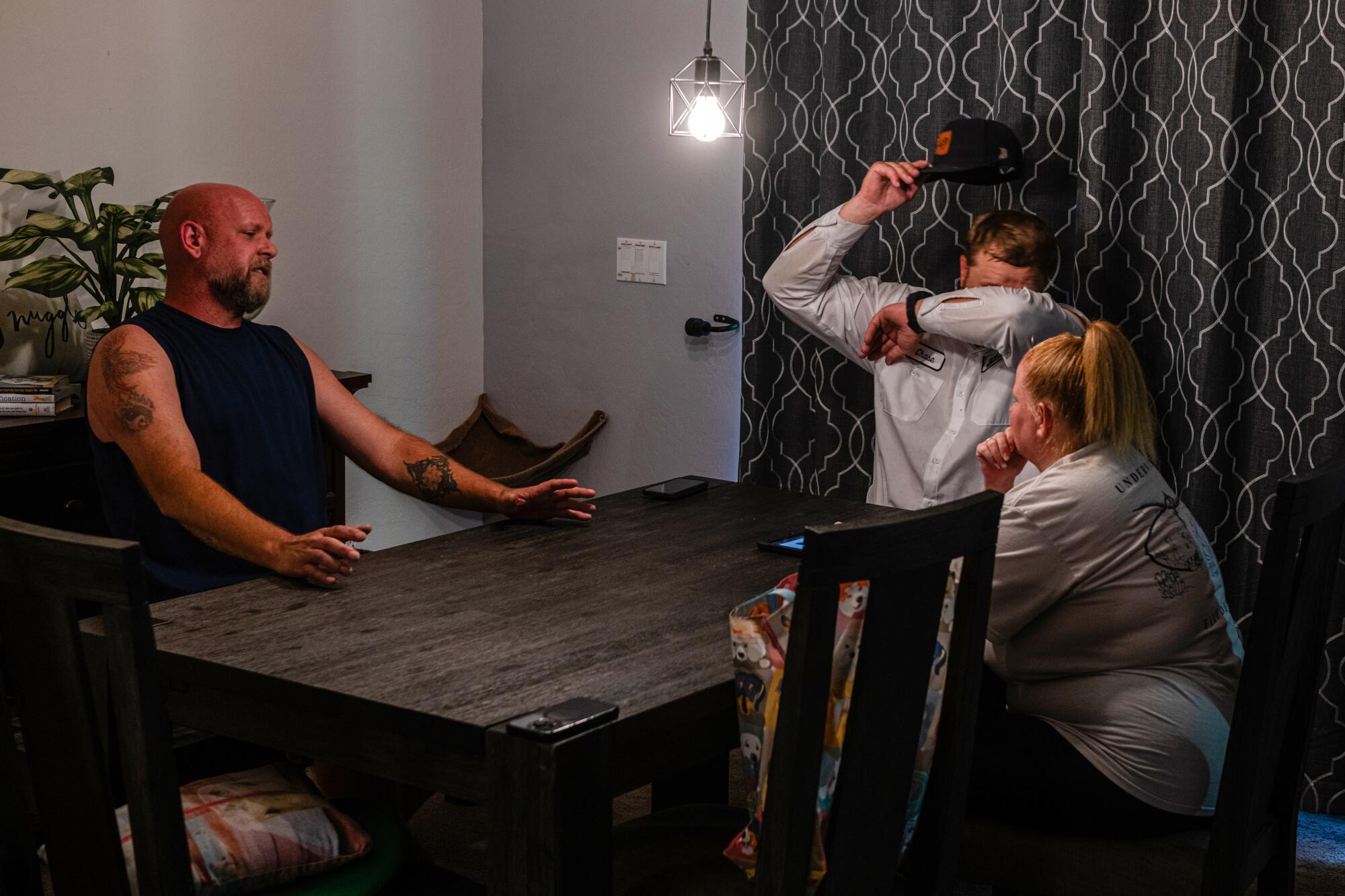
- Share via
PHOENIX — It was just before dinnertime on Day 16 of the worst heat wave in Phoenix history, and the temperature outside Karen Shute’s suburban home was 117 degrees.
Inside, Shute mixed two cocktails and sat down with her friend at the kitchen table. To save on her electric bill, Shute kept her thermostat around 80 degrees during the summer, but she decided she’d treat her friend that evening. She got up and turned it down to 77.
Half an hour later, as the ice melted in their glasses, Shute looked across the table. “Does it feel like it’s getting warmer in here?” she asked.
She checked the thermostat, which said the house had gone up to 83 degrees. It was then that she noticed her air conditioner had gone silent.
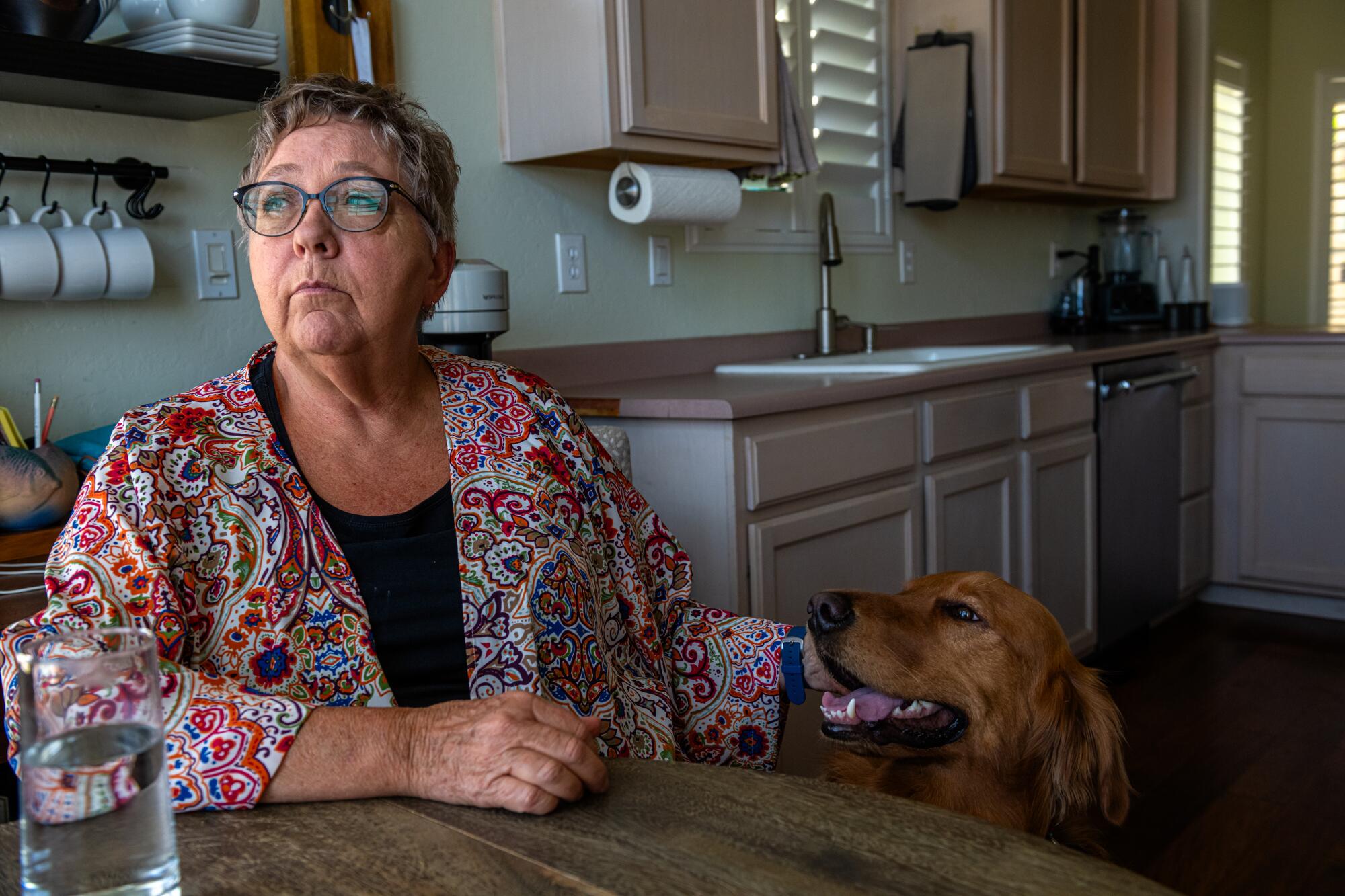
“Let’s just have dinner, I’ll worry about it later,” Shute said.
Shute understood what could happen when the A/C goes out in Phoenix, the hottest major city in America. On the news, she’d seen the stories: dozens of people who die of heat exposure in their homes each summer. Most were senior citizens like her. But young orold, the majority of Phoenix residents could not survive the summers without the machines that keep their houses cool.
Phoenix hit a high of 112 Sunday, marking its 31st consecutive day where temperatures spiked above 110 degrees, according to the National Weather Service.
Figuring there was little chance an A/C repairman would be available on a Saturday night, Shute decided she’d wait until morning to get help.
By the time her friend left and she went to bed, it was 90 degrees inside. She soaked a towel in water and wrapped it around a floor fan and pointed it toward her bed. It was too hot to sleep.
“I can’t just lie here and sweat,” she said to herself as the sun rose.
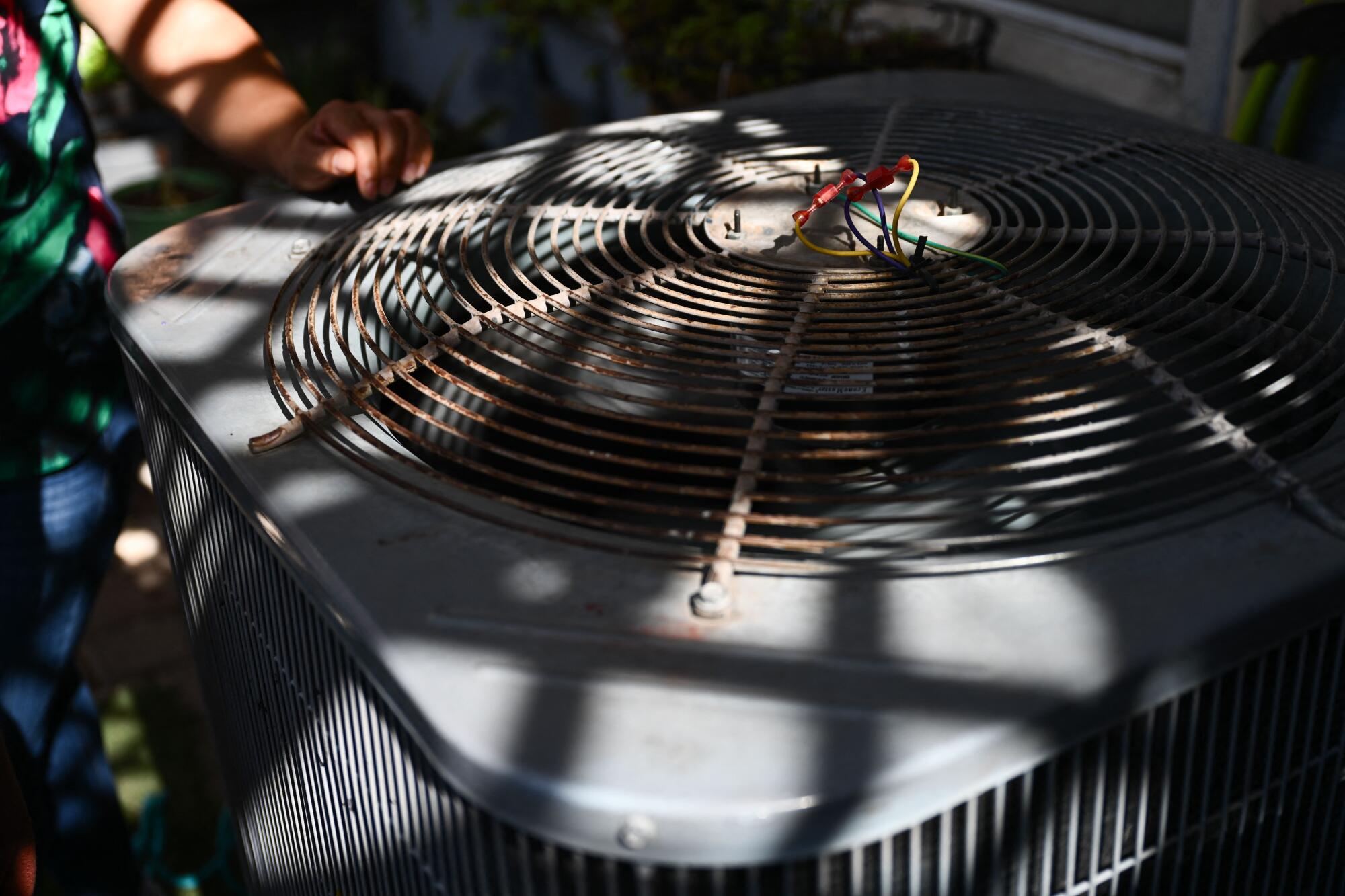
When she texted the help line for Penguin Air, she learned she would have to wait till Monday morning. Like most other A/C repair companies, they were inundated with requests. Demand had far outstripped their supply of technicians.
By 7 a.m., her thermostat had already reached 93 degrees. Her fans were useless.
“But I thought, OK, I’m a big girl — I can make it for 24 hours,” Shute recalled later. “I just have to make it through one more day and one more night.”
::
Humans have never managed to survive in Arizona’s scorching Salt River Valley without technological innovation.
More than 1,000 years ago, the Hohokam dug hundreds of miles of irrigation canals through the desert and slept in pit houses to escape the worst of the summer heat.
As climate change heats ocean water around coral reefs, scientists in Florida race to haul coral to safety in gene-bank tanks before they go extinct.
In 1900, fewer than 5,500 people lived in Phoenix — mostly hardened farmers who would pack up their harvests and migrate to the mountains during the worst of the summer. Those who remained spent the nights in “sleeping porches,” hanging up wet sheets to try to tempt a breeze.
Then, in 1902, Willis Carrier designed his “apparatus for treating air,” and by the 1920s, Phoenix’s first A/C systems arrived by train for use in hotels. By the end of World War II, window A/C units were cheap enough for middle-class homes.
By the 1950 census, the population was 106,818. Today, that figure is 1.6 million, with 4.8 million for the metropolitan area — one of the fastest growing in the country.
Rising global temperatures are dropping air conditioning from luxury to a necessity in many parts of Europe.
Since moving from Wisconsin to Phoenix’s Mesa suburb in 1995 after her husband died, Shute has made peace with the cost of A/C — $300 electric bills in the worst months, and $5,500 for a new machine five years ago. But it’s been worth it for the desert’s charms: the temperate winters and the cholla and saguaro growing on the hillsides — even as the city gets hotter.
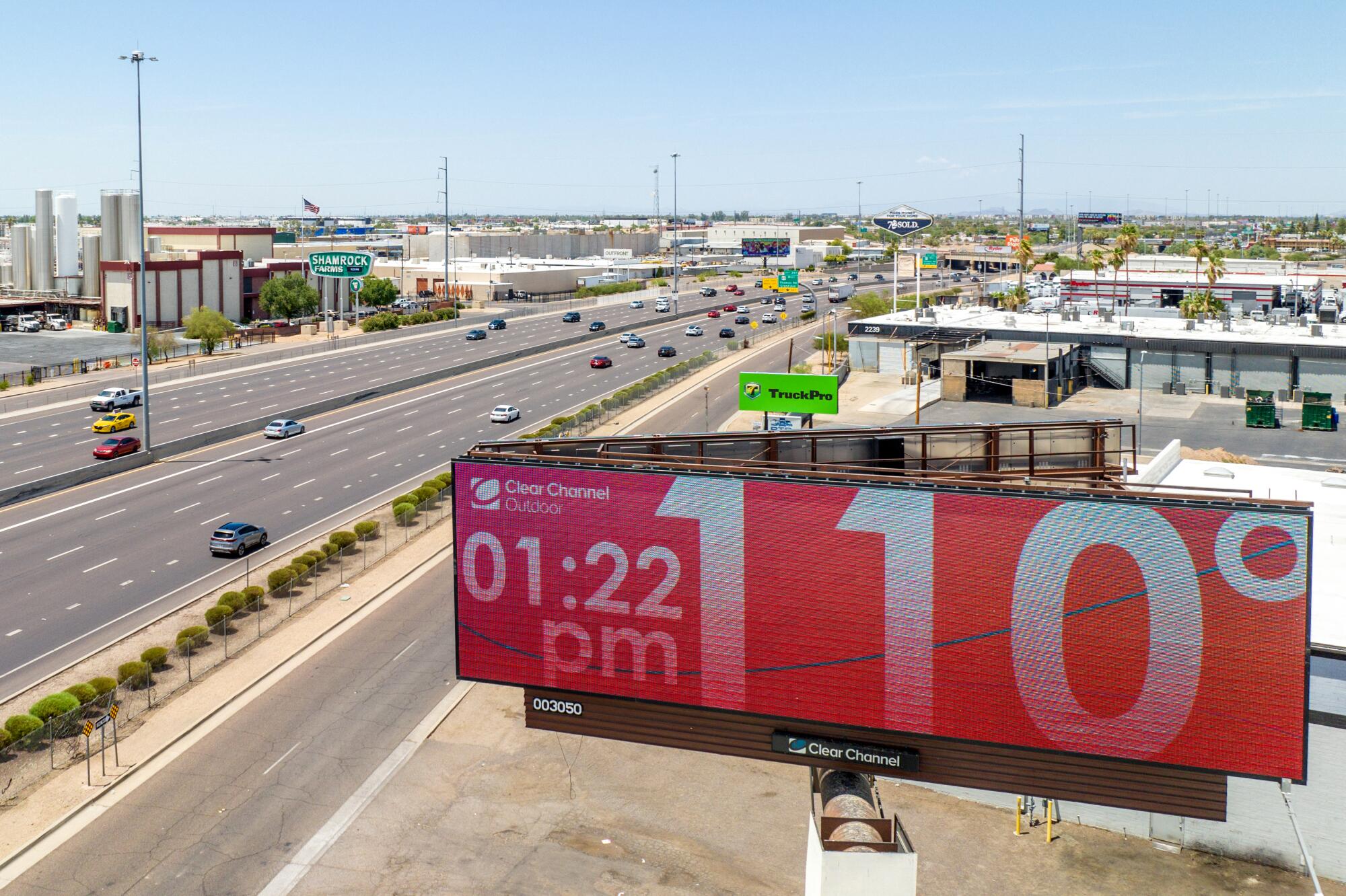
More than even climate change, urban sprawl has super-heated Phoenix. Concrete, steel and tarmac absorb the sun’s rays, and, at night, temperatures can remain 20 degrees hotter in the city compared with the surrounding Sonoran Desert.
A/C has only become more essential to Phoenix’s survival. One recent study found that if the electrical grid failed during a heat wave, nearly 800,000 people would land in the emergency room and nearly 13,000 would die.
Last year, Maricopa County recorded 425 heat-associated deaths, up from 76 in 2012. The plurality of the deaths are homeless people — the most vulnerable group in heat waves — but about a fifth of the victims last year died inside, usually because their A/Cs were not working.
In perhaps the best-known case, a woman named Stephanie Pullman died in September 2018 after Arizona Public Service turned off her electricity for nonpayment. She owed $51.
But when conservatives let people die because of global warming ... that speaks volumes.
Every year, heat kills more Americans than hurricanes, tornadoes and flooding combined. Heatstroke can occur without warning. One second, a person feels a bit too warm, maybe a little dizzy. The next second, the person is dying.
By Sunday afternoon, it was97 degrees in Shute’s house. She and her 3-year-old golden retriever, Chief, spent hours in the small, kidney-shaped pool Shute had put in out back before she retired from her job putting together vacation packages for American Airlines.
Shute dropped a thermometer into the water. It was 98 degrees.
Inside, she turned on fans, closed the blinds and lay towels soaked in ice water over Chief’s snout and paws. She put another towel on her chest and plopped down on the sofa.
Outside, the afternoon heat reached 113 degrees — Day 17 in the streak of highs reaching at least 110.
::
Inside a two-bedroom condo in Chandler, another Phoenix suburb, on a Monday afternoon, A/C repairman Chase Allen climbed up a ladder, through a rectangular opening, into the attic.
The vents in the bedroom had stopped blowing cold air, and he wanted to check the duct work.
Parts of Southern California could experience triple-digit temperatures in this heat wave. Here are some tips to beat the heat without air conditioning.
In the A/C repair business, attics are the greatest challenge and the clearest danger. They exist to manage heat, capturing hot air as it rises elsewhere in the house. That means that attics themselves are like air fryers, collecting heat until they’re well over 160 degrees.

Entering the attic, Allen could feel the precise line where the heat began. The air was stagnant and felt almost solid. Within minutes, his long-sleeve white button-down shirt — the uniform at Penguin Air — was soaked with sweat.
Born and raised in Arizona, Allen was not one to complain about the heat. He was working in construction in 2016 when he fractured a vertebrae while exercising and lost his job. Allen and his wife, the parents of a new baby, lost their house and their car.
Then, a friend told him about A/C repair.
Las Vegas and Phoenix have always endured broiling summers, but the scale and duration of this heat wave has brought new levels of misery.
Allen has made more than 500 house calls this year, bringing in more than $1 million in revenue — more than any of the other 13 technicians at Penguin Air. Since the latest heat wave began in late June, he has worked nonstop, from the early morning until 11 p.m. and sometimes later.
At least as much as he appreciates the paychecks — his manager says the top technicians at Penguin make over $200,000 a year — Allen likes feeling useful. During months like this July, Phoenix needs people like him the same way it needs firefighters and emergency medical technicians.
When the heat gets hot enough to kill, he comes alive.
When asked whether he has a favorite daytime temperature, Allen grinned immodestly and nodded. “Oh yeah — 117 degrees is just perfect,” he said.
But extreme heat takes a toll. Allen is 30, but he’s not sure how many more years he can spend climbing into attics. “It’s a young man’s game,” he said.
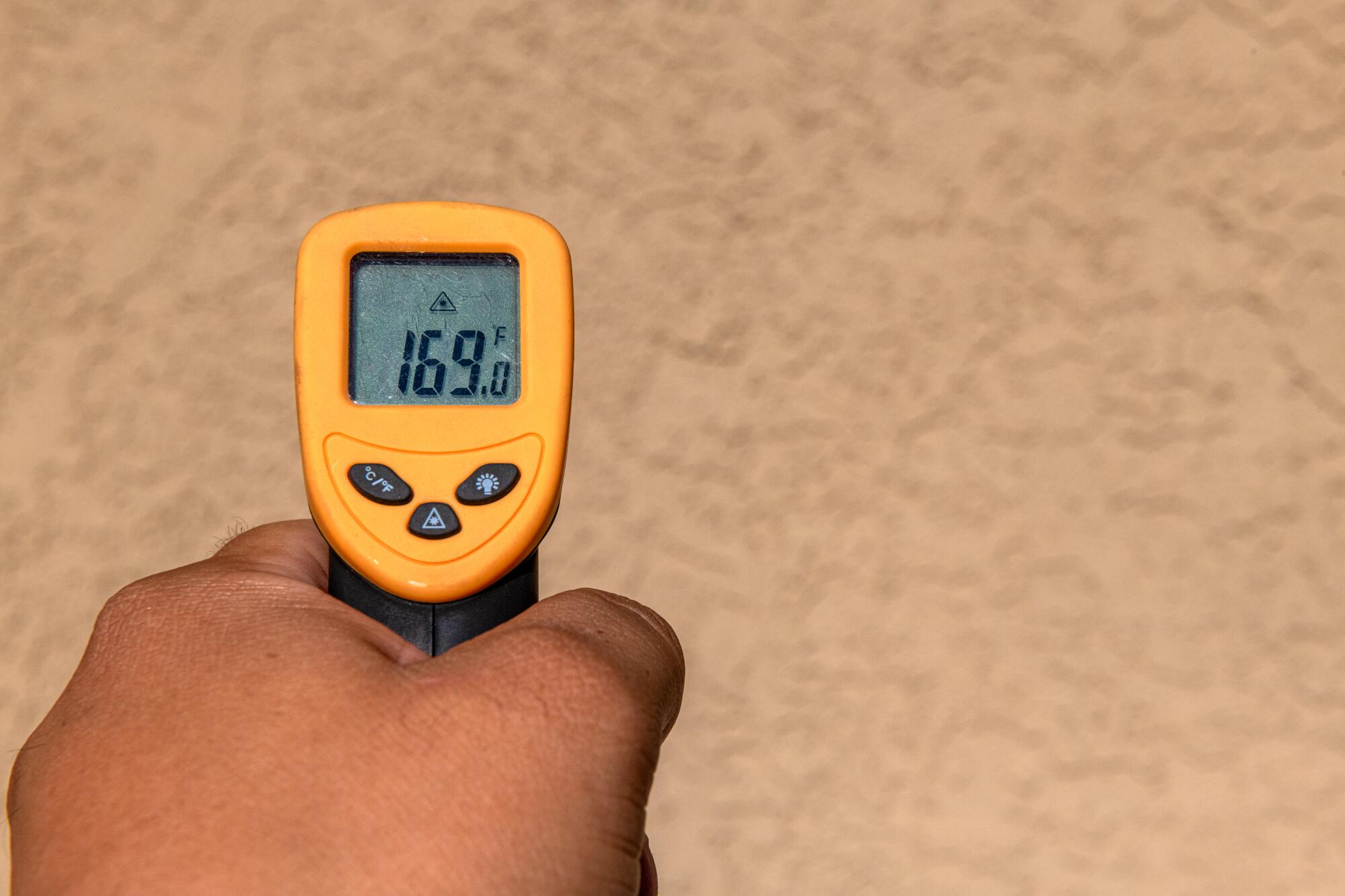
Over the years, Allen has learned to listen to his body — the early symptoms of losing consciousness, or worse, falling into heatstroke. He still remembers one attic in particular.
“That’s the only time I’ve been like, I need to get out of here before I ... die,” he said.
Descending from the attic in the Chandler condo, Allen announced that while the duct work was a mess, the real problem was outside, where an old compressor had given out in the heat.
After offering the owner a quote on a new air conditioner, Allen got back into the car and checked the tablet on which the dispatchers at Penguin sent him his next jobs. It was almost 4 p.m. He pulled out his phone and called the number at the top of the screen, an address 10 miles away in Mesa, his hometown.
“Hi, this is Chase with Penguin Air,” he said.
“Oh, I’m so happy to hear your voice — thank God.”
It was Karen Shute.
::
It had been almost 48 hours and two sleepless nights without A/C.
Monday morning had come and gone, and Shute kept getting later ETAs from Penguin each time she texted. The pool had gotten too hot to cool down Shute or her dog. She sat motionless and dazed in a chair for hours, her thoughts turbid, until she noticed that Chief had stopped moving. She finally brought him over to her neighbor’s house, where the A/C was working.
Shute had reached the end of her endurance. Her ankles had swelled and her urine had turned dark — worrying signs that her kidneys were struggling. Her thinking got sluggish and confused.
“I knew I couldn’t do a third night,” she said.
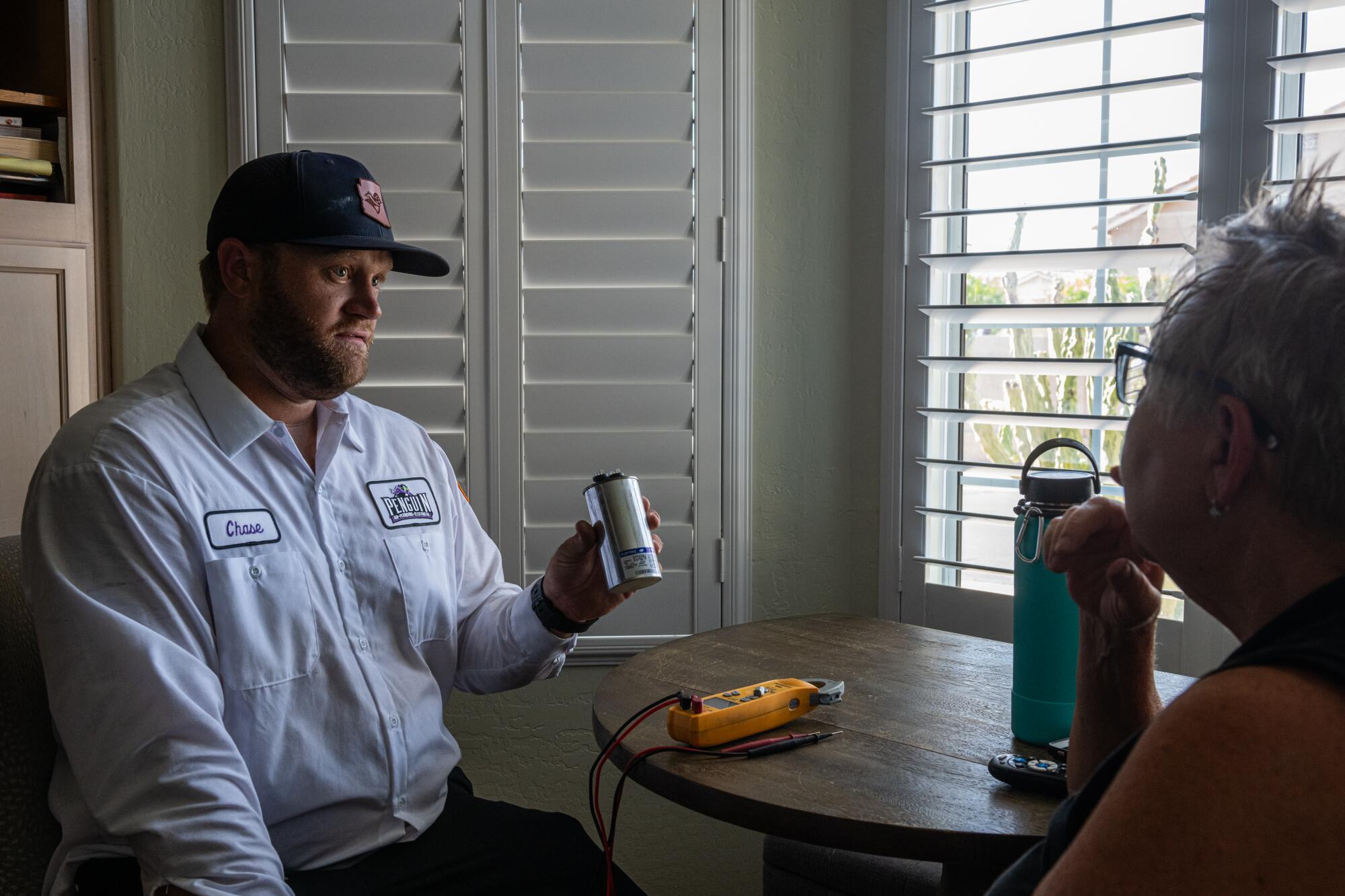
When Shute answered the door for Allen, her eyes were wide and hair askew. Outside, it was 116 degrees. Her bedroom, with its large windows, was over 100.
Her sentences were slow and meandering, a departure from her normal friendly wit. She started asking Allen his opinions on smart thermostats before thinking better of it.
“Maybe you should focus on cooling things down, and then we can talk,” she said.
More than 6.5 billion people — 81% of the global population — experienced climate change-attributed heat in July 2023, according to a new report from Climate Central.
Allen had questions: Was there still some cooling? Was air still blowing out of the vents? How old was her A/C?
“I think I know exactly what’s going on,” he said. He grabbed his toolbox and headed out to the side of the house to the compressor.
As Allen pried open the back, he explained that the sweltering nights are a bigger problem than the super hot days. A/Cs aren’t made to run 24/7. During weeks like these, when the temperature is still 106 degrees at midnight, motors overheat and fizzle out and capacitors bake in the sun until they explode.
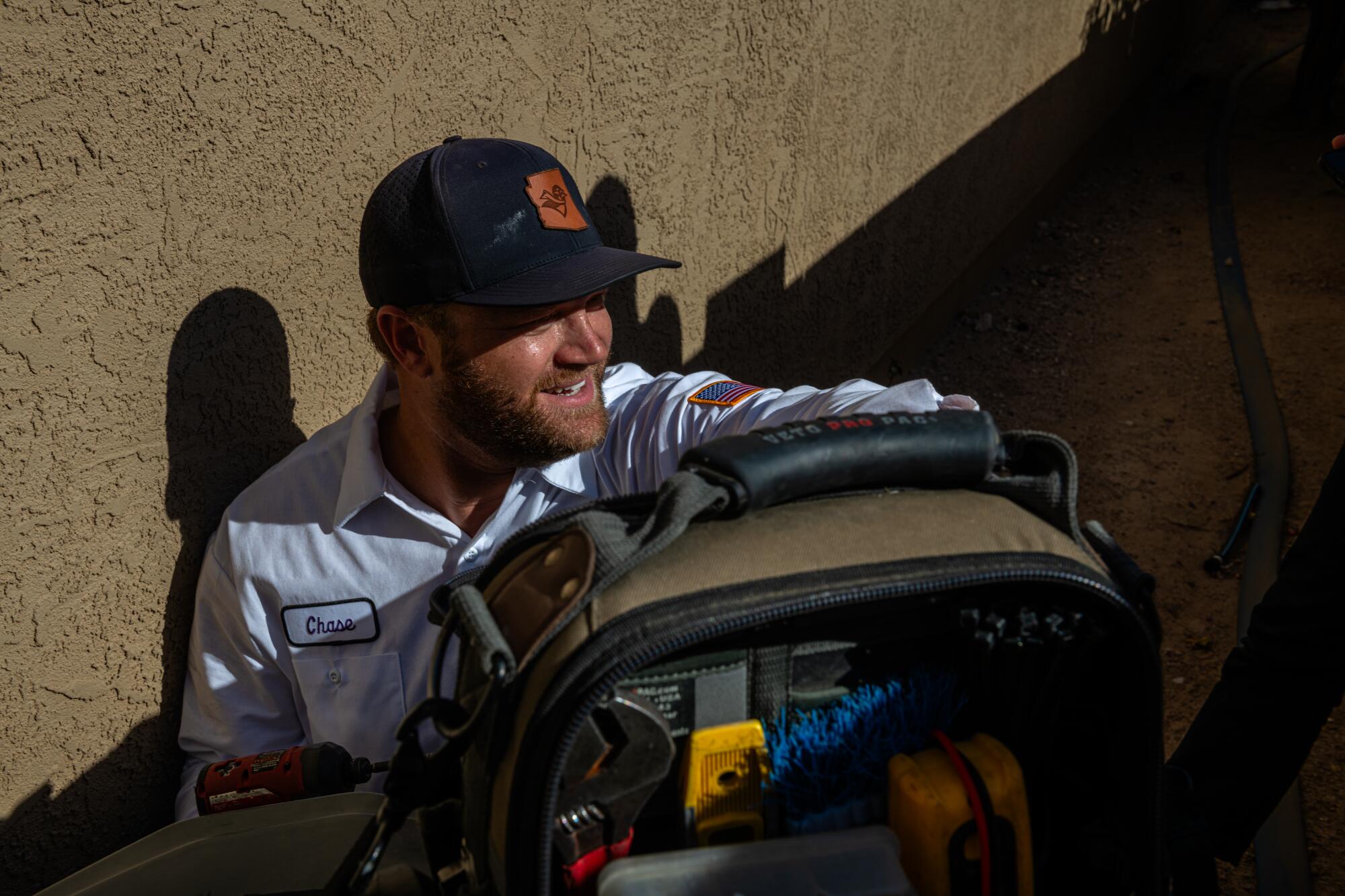
In the corner where Allen crouched, the sun acted like a flame under a cast-iron pan. An infrared thermometer showed the wall next to his shoulder had reached 169 degrees. The air next to it danced like a mirage. His hat heated up to 129 degrees.
After about 20 minutes of taking electrical readings and inspecting the wiring, Allen reached into the back of the machine and yanked out a small, metallic cylinder, about the size of a soda can.
Floods, fires, extreme heat, awful air quality, warming seas: As extreme weather engulfs the nation, the United States resembles a disaster movie set.
“Look at this,” he said. On the top and bottom of the cylinder, the metal had been pushed up in a concave shape, thrust out from pressure on the inside. “The capacitor blew.”
Of all the problems that can befall an A/C machine, a broken start capacitor is one of the simplest: the small electric component is simple for a professional to replace in minutes, and the part itself is as cheap — around $20 — at wholesale prices. With labor, the bill came to $539.57.
“At this point, I’m willing to pay anything. Just get it cool in here,” Shute said. “Just put it on the credit card and I’ll worry about it later.”
It took Allen just a few minutes to make the fix. Back inside, he set the thermostat to 85 to get the A/C started.
Shute went next door to bring back Chief, who perked up to greet Allen. In the kitchen, she pulled up a chair and sat in the middle of the room, under the vent blowing blessed cold air.
::
Phoenix is a city of the future — a harbinger for what might be in store for towns across the country as the climate warms.
In Texas, Louisiana, Oklahoma, Arkansas and Florida, days on which the heat index tops 100 degrees are predicted to double by the midcentury. For a growing number of people, air conditioning is less a matter of comfort than of survival. It is also a significant and growing source of carbon emissions — relying on it heats up the planet even more.
July 30 was Day 31 of 110-degree highs. The streak ended the next day, when the high only reached 105.
Death Valley, one of the most extreme places on the planet, is already seeing the impact of climate change, with summers even hotter than usual.
When it comes to climate change, Allen said he is a “do your own research” type. Despite overwhelming scientific consensus that the climate is warming and human activity is responsible, he is dubious on both counts.
Still, he says that if the planet is warming, then the bottom line is clear: “It will absolutely be good for business.”
No matter the advances in AI, and no matter how many jobs are shipped overseas, for the foreseeable future A/C repair is still going to require a human being showing up to make the fix.
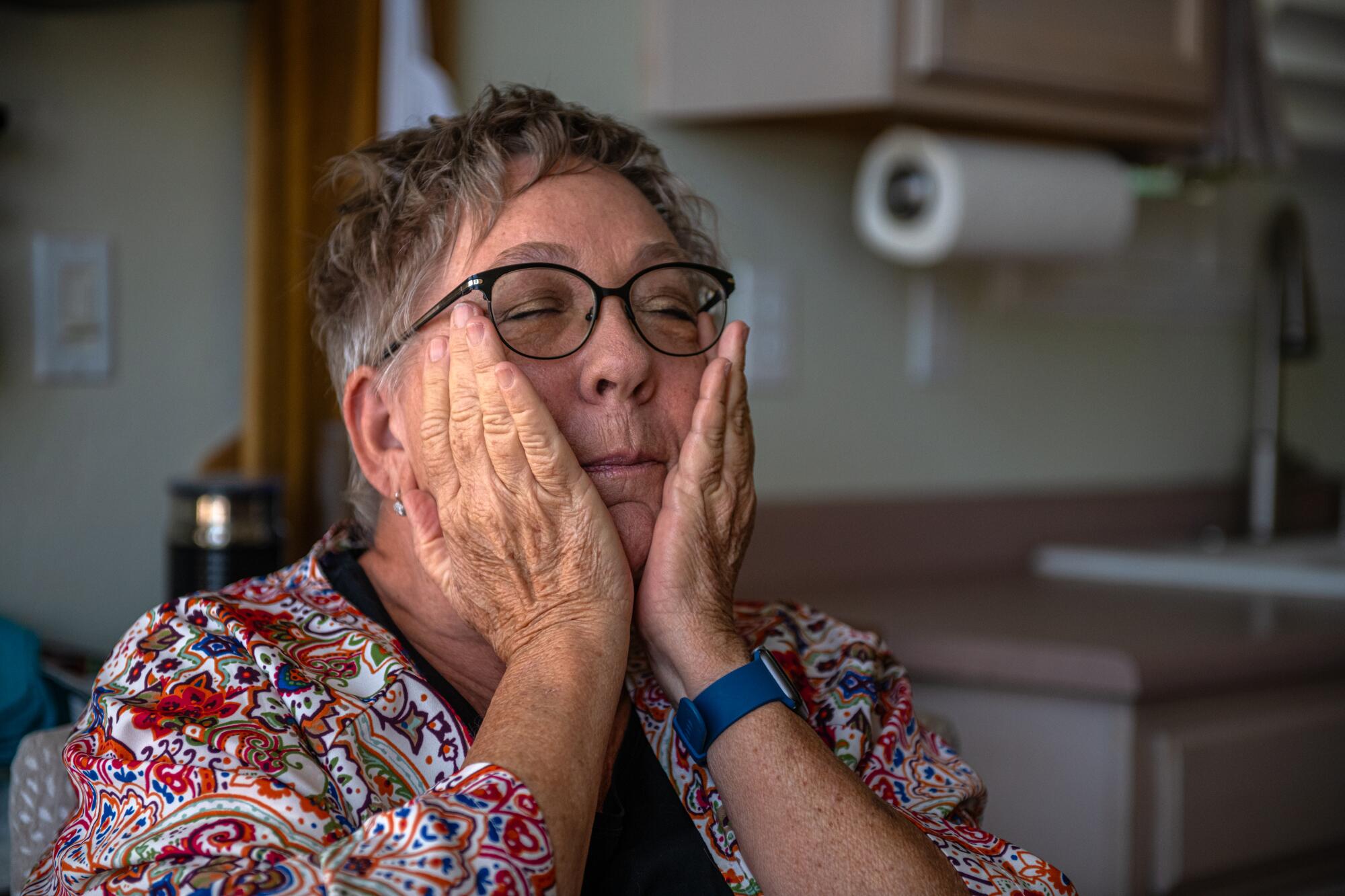
The day after her ordeal, Shute turned her thermostat down to 74.
“I decided I deserve to treat myself,” she explained.
Chief was also in a good mood, but he kept rubbing his ear against Shute’s couch. All the time in the pool had given him an ear infection.
“I try not to complain about the heat, because I made the choice to live here, and I find ways to cope,” she said. “But this — this is extraordinary.”
Shute worries that Arizona summers will only get more dangerous. However, she has no plans to leave.
“I mean, where are you going to go?” she said.
It wasn’t until a week later that Shute realized how seriously her cognitive function had declined after her A/C conked out. “I just wasn’t really with it at all,” she said, expressing regret that she hadn’t gone to a hotel or her daughter’s house in nearby Scottsdale.
In Arizona, researchers speak of the “Big One” the same way Californians talk about the coming big earthquake. The disaster will be the day a heat wave joins forces with a blackout, and the A/Cs in millions of homes spin to a stop.
More to Read
Sign up for Essential California
The most important California stories and recommendations in your inbox every morning.
You may occasionally receive promotional content from the Los Angeles Times.
